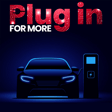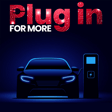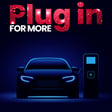
Public EV Charger Etiquette
Welcome to the Plug In For More podcast! Mike, Tom, and Bryant are here to help you on your journey to an Electric vehicle future. Each episode we discuss current events, trends, and a specific topic of education related to EV's. We bring together a diverse experience set, and pair it with guests who are experts in the field. For even more information on EV's, check out www.EVUniverse.com.
In this episode, the guys talk about common etiquette around charging an electric vehicle in a public charger. Also, Bryant updates us on his EV6 20,000 mile check up, and they take a peak at the new Fisker line up!
Be sure to follow PIFM on our various social media platforms, for more exciting content on EV’s
Instagram: https://www.instagram.com/pifm_podcast/
Facebook: https://www.facebook.com/PIFMPodcast
YouTube: https://www.youtube.com/channel/UCqXpv3fnOcv-robjLbDINFQ/featured


